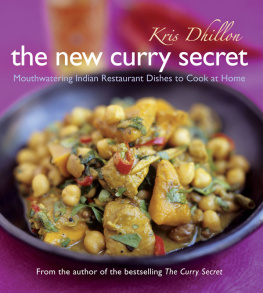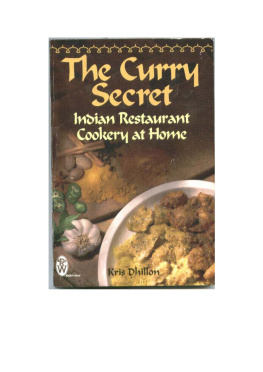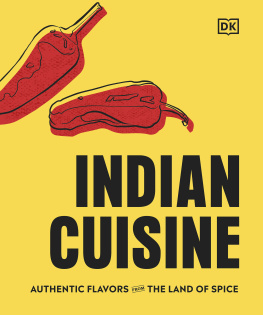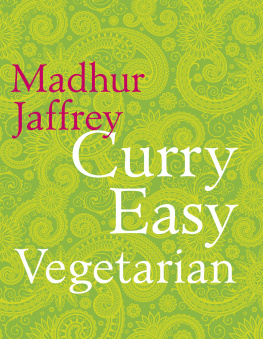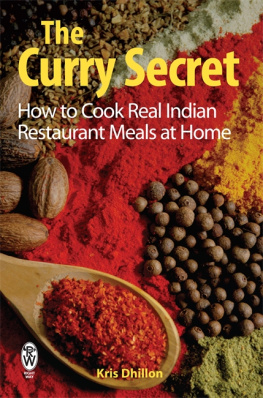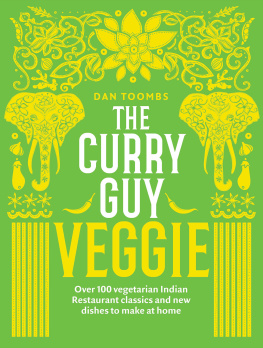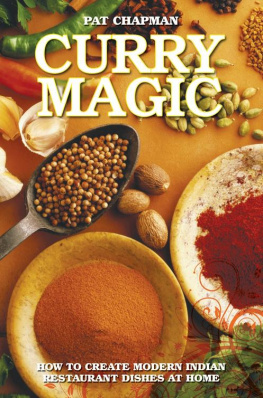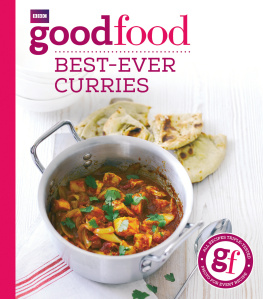KRIS DHILLON
T HE N EW
C URRY S ECRET


Constable & Robinson Ltd
5556 Russell Square
London, WC1B 4HP
www.constablerobinson.com
Published by Right Way, an imprint of Constable & Robinson 2009
Copyright Kris Dillon 2009
The right of Kris Dillon to be identified as the author of this work has been asserted by her in accordance with the Copyright, Designs & Patents Act 1988.
All rights reserved. This book is sold subject to the condition that it shall not, by way of trade or otherwise, be lent, re-sold, hired out or otherwise circulated in any form of binding or cover other than that in which it is published and without a similar condition including this condition being imposed on the subsequent purchaser.
A copy of the British Library Cataloguing in Publishing Dad is available from the British Library
ISBN: 978-0-7160-2204-6
eISBN: 978-0-7160-2352-4
Designed and produced by Bassment Press London
www.basementpress.com
Picture credits: p.17: creative commons Henrique Vincente;
p.19: creative commons thebittenworld.com; p.23: creative commons Judepics.
1 3 5 7 9 10 8 6 4 2
T HIS BOOK is dedicated to all the curry fans who helped make the original The Curry Secret such a huge success. It gives me great pleasure to know that the book inspired so many to follow their passion and enthusiasm for Indian restaurant curries. Well, now in turn, their vigor and enthusiasm have inspired me to write this book, The New Curry Secret, especially for them. It is for curry lovers like them that I have put together a selection of sensational new recipes and revealed even more, to help take their curry cooking to a new level. Never again will phrases like chefs special spice blend or chefs secret recipe on an Indian restaurant menu baffle and perplex anyone. The secrets are all in here.
Happy curry cooking.
www.krisdhillon.com
www.thecurrysecret.co.uk
Kris Dhillon
C ONTENTS
1. I NTRODUCTION
I NDIA IS A land of stark contrasts and startling paradoxes, and a culture with the kind of complexity, mystique and intrigue that develops only with a long, eventful and, at times, colorful history.
Many historians believe that Indian history and its cuisine are as old as humankind itself, evolving over the ages under the influences of travelers and invaders from all corners of the world, and from the emergence of various religions, rulers and cultures internally.
Despite this, Indian cuisine has not lost its original identity. It has instead become richer and more diverse, while managing to retain the core principle that everything we eat should be pure and balanced. Onions, garlic, ginger and spices, integral to Indian cuisine, have proven health-giving properties. Cook your curries with healthy oils such as olive, sunflower and safflower, using ghee, butter and cream in moderation, and you will have a diet that is not only compatible with a healthy lifestyle but one that contributes to it.
Indian cuisine is wonderfully rich and varied. The regional variations reflect the historical influences, contrasting demographics, culture and ethnicity of this vast and exotic subcontinent. With a multitude of vibrant dishes flavored with aromatic spice blends (masalas) and fresh fragrant herbs, it is not hard to understand why Indian food has become a firm favorite all over the Western world.
Traditional Indian cuisine is split into four categories: north Indian, south Indian, east Indian and west Indian. However, ask for a chicken tikka masala anywhere in India, and it is likely that all you will get is a blank look. Going out for curry is not an Indian pastime, but in the West, and Britain in particular, it is a ritual that many people relish with gusto. Chicken tikka masala is reportedly the most frequently consumed dish in Britain and is even more popular than fish and chips.
The cuisine of Indian restaurants, loved by millions, does not fit into any of the traditional Indian cuisine categories, but it embraces some aspect of each, becoming in itself quite unique. It is this cuisine that holds the uncompromising, tantalizing allure for the vast majority of curry lovers in the West. The traditional recipes, as wonderful as they are, simply dont have it when your tastebuds are crying out for the distinct, deep curryish flavor and aroma of restaurant curries.
Indian restaurant cuisine has its origins in the period of the British Raj. Indian cooks, pressed by their British masters to prepare meals that were more acceptable to the British palate, produced modified traditional dishes for which the British rapidly acquired a taste. So much so, that the first Indian restaurants were opened in the affluent parts of London so that British officers returning home from their duties in India were not deprived of their favorite foods. This was the beginning of a new cuisine.
The second phase in the evolution of this new cuisine took place in the mid-1900s as families from Bangladesh, migrating to England to make their fortune, opened Indian restaurants in the East End of London, an area still famous for this cuisine.
A number of anglicized Indian dishes were created during that early period, including the well-known and loved chicken tikka masala. Later in the century there was a rapid proliferation of balti houses serving delicately spiced curries, freshly cooked in a woklike pan. Beginning in Birmingham this new phenomenon rapidly spread to other parts of the country. The balti dishes served in Indian restaurants are descendants of this cooking style and remain popular to this day.
In fact, Indian restaurant food has continued to grow in popularity all over the world. The United States Immigration Act of 1965 saw an influx of Asian immigration to the U.S. and with it a surge of Indian restaurants, especially in San Francisco, Los Angeles, Houston, Chicago and New York. All-you-can-eat buffets with an array of standard dishes are common in many Indian restaurants in the United States, catering for a growing appetite for Indian food among the locals.
Indian restaurants are also common throughout Canada, particularly in Toronto and Vancouver where large numbers of Indian nationals have settled since 1970. The cuisine of South Africa also boasts several dishes of Indian origin; some have evolved over time to become unique to South Africa while many others are recognizably traditional Indian preparations modified with local spices.
In Australia the popularity of Indian food has increased considerably in the last 20 years, resulting in a rapid growth in the availability of Indian food and ingredients. Nearly all Australian towns and cities now enjoy the existence of several good Indian restaurants and eateries, and more are opening each month.
There has emerged an avid and enthusiastic demand for dishes that challenge the modern Western palate, rather than pander to the tastes of yesteryear when recipes were adapted to create milder dishes like chicken korma and chicken tikka masala that were gentler on the tastebuds. Indian food is now integral to the Western diet and restaurateurs have responded by creating more authentic dishes with a no-holds barred approach to the use of more pungent spices and herbs.
There has also been a period of culinary evolution around the globe with a growing homogenization or mixing of cooking styles and techniques. Worldwide, professional chefs have sought to develop and promote the intermingling of a variety of popular cuisines, resulting in what has become widely known as fusion food. Indian chefs too have embraced these developments and Indian spring rolls, dhal soup and

